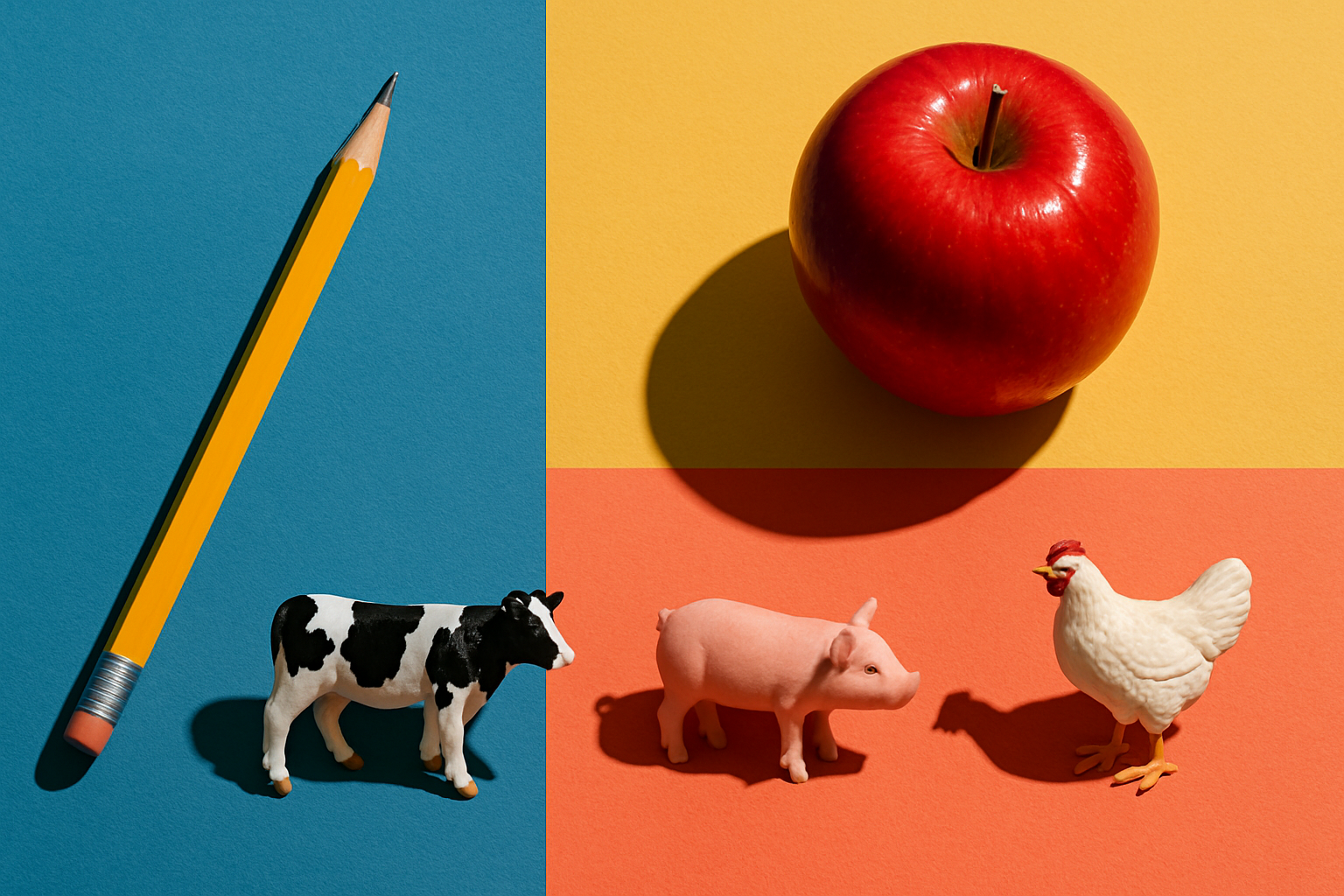




Are common claims about factory farming true or false?

Many people have probably heard the term “factory farm” before, at least in passing. It’s become a bit of a catchall term for huge agricultural facilities that produce much of the food—particularly meat—that people throughout the world eat. The way factory farms are run have important consequences on animal welfare, human health, and the changing climate.
Can you pass this true-or-false pop quiz about factory farms?
CLAIM: Factory farms house hundreds, sometimes thousands of animals in the same facility.
TRUE. Factory farms, AKA concentrated animal feeding operations (CAFOs), are typically enormous facilities capable of containing livestock like cows and pigs—not just by the hundreds,but by the thousands and tens of thousands. Chicken CAFOs can house more than 100,000 birds! Such staggering populations can only be accomplished by providing animals with the absolute bare minimum in space, rendering many animals virtually immobile all their lives.
CLAIM: Factory-farmed animals are protected by animal cruelty laws.
FALSE. It’s hard to believe, but the one billion-plus animals on US factory farms (five times the human population of the US) are afforded no welfare protections by the federal government. Even the federal law meant to ensure farmed animals receive a painless slaughter lacks effective enforcement. Meanwhile many states’ animal welfare laws specifically exempt farm animals.
CLAIM: The majority of animal-based food products come from factory farms.
TRUE. Calling this one true feels like a bit of an understatement. I mean it’s really true. According to The Sentience Institute’s analysis of USDA and EPA data, 99% of all farm animals in the US live on factory farms. The same group estimates that 90% of farm animals globally are put through this industrialized system—including about three quarters of all farmed land animals, and virtually all farmed fish.
CLAIM: “Farm animals” aren’t complex enough to feel pain or fear.
FALSE. The science on this is clear: Animals like chickens, pigs, cows, and even fish can feel pain, can experience a range of emotions including fear and grief, and overall are much smarter than humans historically give them credit for. This is what makes the horrors of being trapped on factory farms truly heartbreaking for these sensitive, intelligent animals.
CLAIM: Factory farms contribute to climate change.
TRUE. This one is another science slam dunk. The food industry is responsible for about a third of all greenhouse gas emissions throughout the world, and industrial animal farms lead the pack in methane and nitrous oxide output. Plus, the expansion of livestock farming is a primary driver of deforestation, which is rapidly accelerating the climate crisis.
CLAIM: Living near a factory farm can be a hazard to your health.
TRUE. There’s no shortage of research to show that factory-farm-dense communities are at a heightened risk of certain cancers and antibiotic resistance. Other studies have found links to poor mental health and even higher infant mortality. These are the results of living near massive facilities that pollute the air with toxic gases like ammonia and hydrogen sulfide, and local waterways with manure and fertilizer runoff.
CLAIM: I can avoid supporting factory farms if I check for “organic,” “all natural,” and other labels when I’m at the grocery store.
NOT NECESSARILY TRUE. Big Food companies know that they can sell more eggs and milk if people associate their products with lush, pastoral farmhouses where chickens and cows roam happy and free—instead of the overpacked, squalid, inhumane facilities from which most of these products actually come. Yet merely slapping a “natural” or “humanely raised” label on the package doesn’t necessarily make it so. Click here to learn more about deciphering what food labels carry strict requirements, and what labels are essentially meaningless.
CLAIM: The number of farms in the US is steadily declining.
TRUE. According to the USDA’s 2022 farm census, the number of farms in the US has fallen below two million—the first time that’s happened since before the Civil War. But this doesn’t mean less meat is being produced. In fact, worldwide consumption of meat has tripled in just the past 50 years. Both statistics are true, thanks to consolidation. While small farms are going out of business, industrial factory farms—that minimize welfare to maximize output—are expanding and thriving.
CLAIM: Animal rights activists are the only ones who oppose factory farm expansions.
FALSE. There are many legitimate reasons to oppose factory farms, whether someone chooses to eat animal products or not. Environmental activists speak out against industrial agriculture’s exacerbation of climate change. Social justice activists highlight that factory farms are disproportionately built near and affect low-income communities and people of color. Even people who are animal farmers themselves (on a far smaller scale) oppose the unsustainable expansion of factory farms.
CLAIM: The factory farming industry is too powerful to fight, so there’s no chance at making any progress.
FALSE. Standing up to the giant that is factory farming can make anyone feel like David standing up to Goliath. Thankfully in this case, there are a whole lot of Davids in the fight. In recent years, The Humane League and like-minded organizations have successfully spared millions of animals from the most extreme forms of confinement. There’s a long way to go yet, but we can get there by sticking together.









